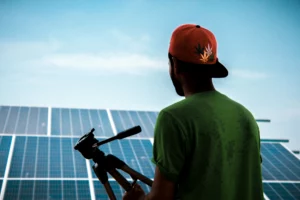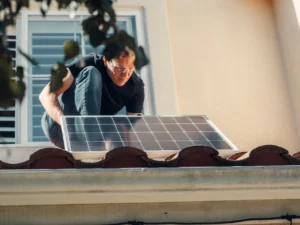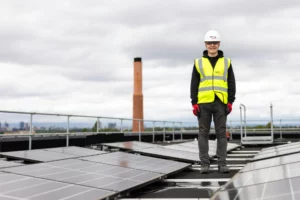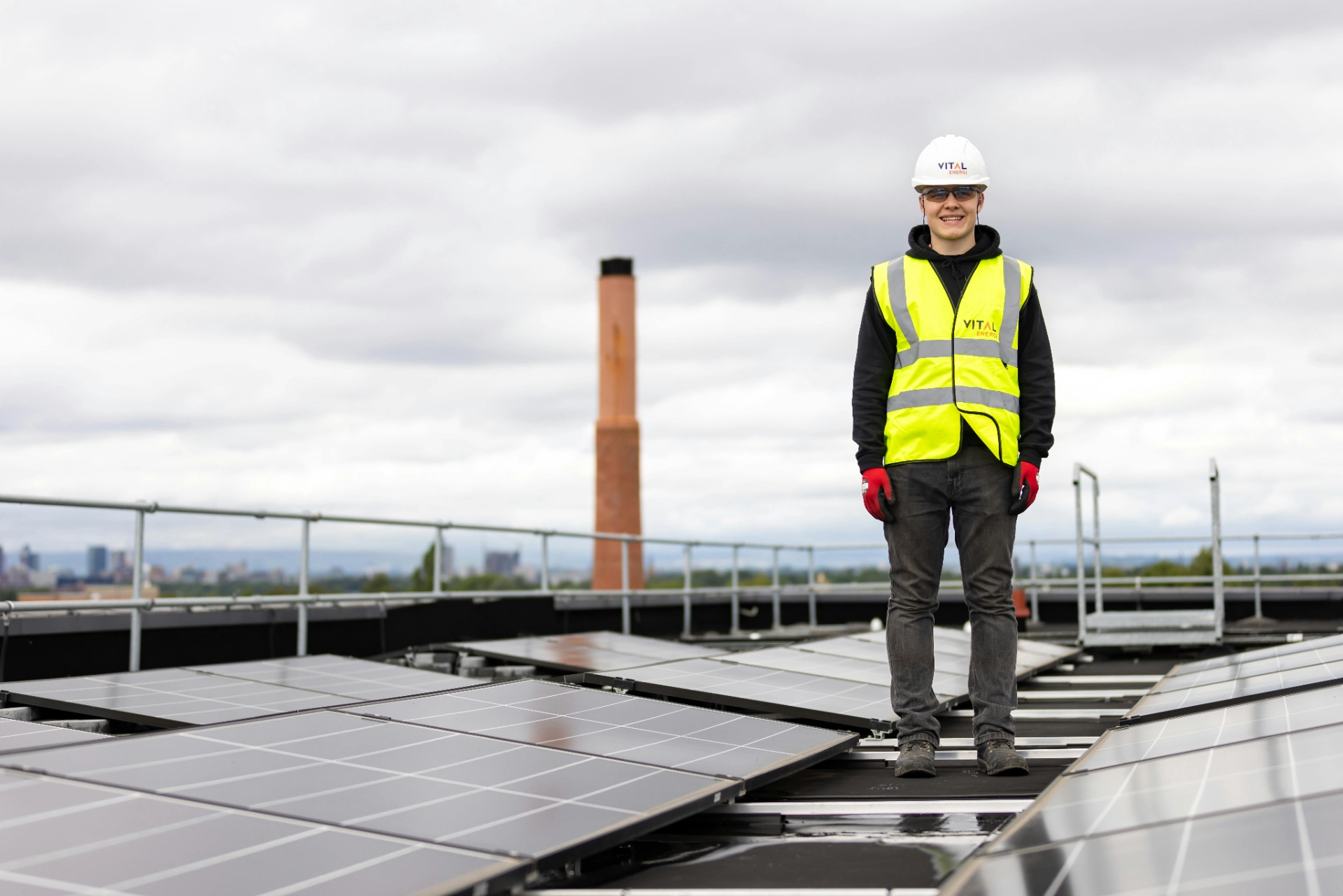With the growing environmental concerns and the increasing desire to reduce electricity bills, installing solar panels in 2025 has become both an ecological and economic solution. Whether you’re considering a photovoltaic installation to produce your own electricity or a plug-and-play solar kit to get started easily, it’s essential to understand the different types of panels, their operation, and the key steps to ensure the profitability of your project.
In this article, we will guide you through the essential information to optimize your solar investment, from choosing the right photovoltaic solar panel for your roof, to the overall installation costs, available aids, and maintenance tips. Get ready to turn your roof into a sustainable and profitable energy source!
Understanding Solar Panels and Photovoltaic Energy
Before installing solar panels, it’s important to understand how they work and the different options available. A solar panel is a device that captures sunlight and converts it into electricity through photovoltaic cells. This technology, called photovoltaic, is the most common for residential installations.
There are several types of solar panels, each with its own characteristics:
- Monocrystalline Panels: Made from a single silicon crystal, they offer high efficiency and good durability but are often more expensive.
- Polycrystalline Panels: Made from multiple crystals, they are generally cheaper but slightly less efficient than monocrystalline panels.
- Flexible Solar Panels: Lighter and flexible, they adapt to curved surfaces but have a shorter lifespan.
Note that there are also solar thermal panels, which are used to heat water, but their use is different from photovoltaic panels that produce electricity.

The Benefits of Installing Solar Panels in 2025
Solar Panel Profitability
Thanks to the constant decrease in the price of photovoltaic panels and the optimization of installation techniques, the profitability of solar systems improves each year. By producing your own electricity, you can significantly reduce your energy bill, and in some cases, you can even sell excess production back to your supplier.
Self-consumption and Electricity Savings
Self-consumption allows you to use the electricity produced by your panels directly, reducing your dependence on the grid. With modern solutions, such as plug-and-play systems or solar kits, it has never been easier to start producing your own energy.
Positive Environmental Impact
By choosing solar energy, you contribute to reducing greenhouse gas emissions and transitioning to renewable energy sources. A well-designed photovoltaic installation contributes to a more sustainable future while increasing the value of your property.
Choosing the Right Type of Solar Panel for Your Roof
To ensure the performance and durability of your installation, it’s crucial to choose the right type of solar panel suited to your roof and energy needs.
Selection Criteria
Several factors influence your choice: the panel’s power, the surface area available on your roof, as well as the price and material quality. The size of the panel and its efficiency will determine the amount of electricity produced.

Monocrystalline and Polycrystalline Panels
Monocrystalline panels are known for their high efficiency and longevity. They are perfect for roofs with limited space, as they produce more energy per square meter.
Polycrystalline panels are a more economical alternative, with slightly lower efficiency. They are well-suited for larger roofs where space is not a constraint.
Plug-and-Play Solar Modules and Kits
For those who want a quick and easy installation, plug-and-play kits or modules are ideal. These pre-assembled solutions often allow faster deployment and can be installed without complex work.
Planning Your Photovoltaic Installation
Roof Surface Evaluation and Orientation
The size and orientation of your roof play a crucial role in solar electricity production. A south-facing roof, without shading, allows for optimal panel performance. It is important to measure the available surface area to determine how many panels can be installed.
How Many Solar Panels to Install?
The number of solar panels depends on your electricity consumption, roof surface area, and the power of the chosen modules. For example, a standard installation may consist of between 8 and 14 panels, depending on the needs.
Electrical Panel Integration and Connection Management
The photovoltaic installation must be properly connected to the house’s electrical panel. For this, it is recommended to hire a professional who will ensure compliance with electrical standards and manage the connection with the distribution network operator.
The Cost of a Solar Panel Installation in 2025
Solar Panel and Solar Kit Prices
The cost of solar panels has significantly decreased in recent years, making installation more accessible. The price depends on the type of panel (monocrystalline, polycrystalline, flexible) and the desired power. Solar kits are often a more economical option for small installations or self-consumption.
Total Budget for a Photovoltaic Installation
Beyond the material costs, you also need to account for the cost of installation, connection to the grid, and any necessary preparatory work on the roof. The overall budget also includes possible updates to the electrical panel.
Available Aids and Subsidies
To encourage energy transition, several regions, such as Wallonia, offer financial aids and subsidies for installing photovoltaic panels. These programs significantly reduce the net cost of your project.
Optimizing the Profitability and Maintenance of Your Solar Installation
Solar Production and Electricity Consumption Monitoring
It is important to regularly monitor your system’s production using dedicated tools or apps. This helps identify any performance decline quickly and adjust your consumption to maximize self-consumption.
Solar Panel Maintenance
Photovoltaic panels require little maintenance, but occasional cleaning to remove dust, leaves, or debris improves their efficiency. Periodic checks by a professional can also prevent breakdowns and prolong the system’s lifespan.

Conclusion: Take Action with RenovSmart, Your Trusted Partner
Investing in solar panel installation in 2025 is more than just an economic choice; it’s a commitment to a sustainable future and optimal control over your electricity consumption. However, achieving this project requires expertise, diligence, and the selection of the right materials to ensure the performance and longevity of your installation.
That’s why it’s crucial to rely on qualified professionals who will guide you at every stage, from choosing the solar kit to commissioning and maintenance. To make this process easier, RenovSmart connects you with a large network of certified experts specializing in photovoltaic installations.
Ready to take the next step?
Visit RenovSmart to find a professional near you, compare offers, and get personalized advice tailored to your roof and energy needs. Don’t leave anything to chance: entrust your project to specialists for the best return on investment and enjoy the benefits of solar energy with peace of mind.
Get your free solar panel quote today!




